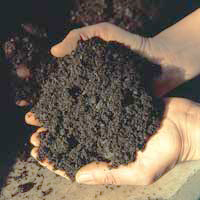
118 Windmill Road
Croydon
Surrey
CR0 2XQ
Tel: 020 8665 6789
rockinghams@yahoo.co.uk

London Organic Soil supply and deliver in South West, South East and South London area.
Help and Advice
Common Concerns
1. DISEASE
Fusarium Patch Disease is the most common affecting grass which can cause terrible damage. A suitable fungicide treatment may need applying two or three times to cure. This disease is caused usually when maintenance is below par, e.g. Wrong or to much fertiliser, insufficient watering, etc.
2. WEEDS
Weeds can be prevented by maintaining your lawn in good order. Competition in grass is very competitive and if its in a healthy state weeds will struggle to survive. They are, however, very competitive and opportunistic and easily establish in damaged or stressed lawns. Weed treatments are plentiful on the market and will not harm the grass.
3. PESTS
A very common pest is the Leather Jacket Grub. This is the larvae of Daddy Long Legs or Crane Fly. They are often seen flying around in the summer and autumn. They tend to fly in late summer and lay up to 300 egs in grass lawns which then hatch into Leather Jackets. As a rule they stay underground in the winter and cause damage to the turf in the spring when the larvae feed on the roots. Plus, many birds will damage the grass whilst looking for these grubs. An application of Bayers Lawn Grub Killer sprayed in late summer will usually solve this problem.
4. TOADSTOOLS
Fungi class basidiomycetes (toadstools) have over 13000 species. The part living below ground (vegetative fungi) feeds on dead plant material and speeds the process of decay. Usually when the soil is prepared for the new turf, buried organic matter (debris) is brought to the surface. The fungi spores are triggered when conditions are suitable (mild and wet), causing an outbreak of toadstools. When the supply of nutrients in the ground are finished the toadstools will die, no more are produced so they do not re-appear. They do not damage the lawn and by breaking down dead matter they are beneficial. The small brown toadstools are not usually poisonous, but we would recommend avoiding eating them just in case. Toadstools consist mainly of water and soon shrivel up and disappear. Remove with a stiff broom or mower.
5. TOUGH STALKS
Tough Stalks that stand up after mowing are Ryegrass stalks. They are robust enough to survive regular cutting. If you cut your lawn at between 12 & 25mm with good nutrient levels the problem is able to be managed.
6. LUMPS OF MUD IN LAWN
Lumps of mud in the lawn. These are caused by worm casts which are common from September to October and March to early May. They become flattened and smeared by foot traffic or mowing and are a nuisance. They can create weeds or bald patches. It is best to brush off the casts with a stiff broom and be glad worms are around to aerate soil and greatly benefit the lawn.
Please click on a link below for more information.